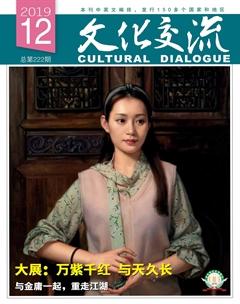一个美国艺术家镜头里的山水中国
宋笑梅
“有一天在课堂上,教授给我看中国明代山水画,那些嶙峋奇特的山石,它们的造型狭长而不规则,既奇怪又美,不像现实中的风景。教授告诉我,这些山水确实是真实存在的风景。”那是20世纪80年代的事,Lois Conner还是耶鲁大学的研究生,她当时选修了中国明代山水画。
在很年轻的时候,她就被这幅明代山水画莫名地牵引着,之后选择的艺术方向,具有了某种宿命般的价值跟意义。
Lois今年68岁,从她预感自己将要去中国,到真正来中国拍摄山水,正好35年。她有一个好听的中文名字:康兰丝。《康兰丝中国摄影作品展》在杭州北山双桂轩展出。
桂林·1984年
Lois的第一个中国坐标是桂林。
明代山水画对于Lois来说仿佛来自另一个星球。教授告诉她,这些奇奇怪怪的山水就在中国的桂林。
“当时班上一共8个学生,每一个同学都会中文,他们对中国艺术有着丰富的知识储备,而我只是初学者,第一次上课有点害怕。我和教授说可不可以不上这门课。教授鼓励我说,‘你是一个艺术家,对这个课题可以有不同的视角。”最终她留下来完成了这些课程,之后像掉进一个宝库,继续研究唐代、宋代、明代的手卷。她每天中午抽一個小时的时间学习中文,一周至少3次去博物馆看原作。
这些中国山水的画面牢牢地长在Lois心里。之后在联合国工作的她做了一份详细的中国之行拍摄计划,得到了古根海姆基金会的奖学金。
1984年,她从香港辗转来到桂林。桂林给Lois的感觉很不可思议,“桂林,顾名思义是桂树的森林,桂树每年开花一次。我第一次抵达桂林,当机舱门打开,花的香气扑面而来,我开始寻找这些花,简直太神奇了!”
Lois第二次来阳朔,终于见识了中国明代山水画上的“山水”,果然如教授所说,这些山水是真实存在的。
从那以后,在所有波澜不惊的日子里,Lois扛着一台70磅重的7×17英寸全画幅相机奔波于中国的大江南北。她去燕园、西湖拍荷花,也去圆明园拍摄被雪覆盖的残缺拱门。
Lois在讲自己的故事时穿插着中文,这和第一次在纽约见到她时相比,中文进步太多。她笑言一回美国就会忘记。
“我今年68岁了,可是我的身体很好!”她举起自己的手臂,看上去很强壮,一点都不像一个68岁的老人。
那个年代来中国的外国人很少,Lois说,“在20世纪80年代,一个外国人来中国旅行非常难,买火车票难,找酒店也难!整个长江一带都很难找到合适外国人住的酒店。”
Lois的第一次中国之行,很梦幻。
荷花·1988年
“1988年我在北大,开始第一次尝试拍摄荷花。但是到了1995年,我在杭州的时候,我对荷花彻底着迷了。”Lois说。
整个西湖的角角落落,Lois不记得自己跑了多少遍。每年夏天一到,满湖的荷花,无不茂盛得直逼到人脸前,Lois喜欢它们这样放任的姿态。
1995年秋天,Lois又一次来到杭州,这次准备在杭州待上一个月,想完成一系列荷花的拍摄,“当时的天气很糟糕,杭州几乎天天都在下雨。由于阴雨天没有光影对比,看不到荷花根茎部从哪里开始,从哪里结束。”
一旦开始工作,周围其他东西都消失了!在等待的几天里,Lois拿着相机在湖中观看荷花看得入神时发现一个现象,“我看到它在湖中的反射,就像是荷花自己的影子。我感受到光影的流转变幻,因为没有明亮的阳光,看起来反而像中国传统书画。这是神给我的礼物,我感觉自己学到了一种新的语言。”
《三角莲花》就是在这种很不给力的阴天下拍摄的,然而又令她重新认识荷花。观者其实难以想象,在无数个起早摸黑的日子里,Lois曾苦心积虑地琢磨过光线、秩序甚至气质之间的种种牵连,还要和坏天气作斗争。整个过程,是挑衅亦是接受现实,是探索亦是与之共存,而最终出来的,却是通透。
去年8月,Lois的妈妈过世,10月她来西湖和圆明园拍荷花。她长时间凝视着荷花,竟从荷花里看到了妈妈。此刻天空映射着水面,她有点难过,想哭,“我一直坐在那里,想念妈妈,我不想结束。可以做的事情太多了,我的生命却不够长。”
“我的情绪更倾向于思考,也可以借此梳理一下自己。”Lois看到荷花在四季光阴的长河里生长着、变化着,这让她无比惆怅。
“我是一条恐龙,从拍摄到暗房,所有事都自己做。”Lois扯开伤感的话题,“有时候上午出去拍,下午回暗房洗,发现问题再回去重拍或补拍。我喜欢这种工作方式!”
乐山·1986年
看到《乐山大佛》是在上海韩枫艺术空间,远看它就是一幅宋代水墨画。
据Lois讲,1986年到四川乐山,“是件很意外的事,因为我原本是要去拉萨的,在路途中认识了一个朋友,他要去乐山,我在中途和他一起坐巴士到了那里。”
“在乐山我遇到了一个老和尚,他讲话的方式很像读诗,他走到大佛下巴的位置开始祈福。我走到佛的肩膀部位,这是最好的观景地点,景色在我的眼前舒展开来,我被它震撼,内心澄净。那一刻,我知道了我想拍摄的是什么样的画面。当时天色就要暗下来了,我必须争分夺秒,留心每个不容错过的细节。我很专注地通过镜头去看这些画面,突然间,我耳边传来了僧人们集体诵读发出的梵音……”
现在回想起来,拍摄的情形很危险,“围栏很矮,路很陡峭,但我顾虑不了那么多,我觉得我离佛陀非常近,这是他发出的声音,仿佛他也在注视着我。那一刻,我完成了这幅作品。”
变化·2019年
在探访中国的30年间,中国发生了翻天覆地的变化。作为亲历者,Lois的照片无意间记录了中国工业化和现代化背景下的世事变迁。
Lois住在北京烂面胡同时,适逢北京大兴土木,她拍摄正在建的建筑、维修时的建筑、被摧毁的建筑。其中的《中国银行建造期间内景》是北京首批新建筑地标中的一座。约合40米的翼状内部结构紧紧包裹在格状脚手架中,遮蔽了天空。
Lois在中國有好多好朋友。在她纽约的工作室,收藏着他们年轻时的珍贵照片。不仅仅是友谊的记录,也是通过摄影的方式把一个个面孔留存下来,呈现了不同时代人的命运之错综联系。
只要Lois一来中国,和年轻时一样,他们依然会在一起聚会吃饭,“我的中国朋友都特别喜欢吃,我也喜欢吃。中国的食物太丰富了,在中国旅行时,每个地区的食物都不一样,甚至这个镇和隔壁镇的食物也不一样。这很神奇!”
往事如烟。Lois说桂林是她生命的一部分,杭州是她灵魂的一部分。
“我还想拍我所认识的艺术家肖像系列。而拍荷花则是我一生的事。”
(本文图片提供:康兰丝)
“康兰丝中国摄影作品展”
时间:2019年10月27日~2019年12月31日
地点:杭州北山双桂轩
Lois Conner became curious about China when attending an art appreciation course. It was in the early 1980s and she was a student at Yale University. After learning from her professor that the rivers and mountains in the landscape paintings by ancient Chinese artists really existed, she knew she had to visit China and take a look.
There were only eight students in the course. The other seven could read and speak Chinese and had knowledge of Chinese culture. Lois Conner was a beginner. She was scared by the daunting course and asked timidly if she could back out. The professor encouraged her to stick to the bitter-sweet end: “You are an artist and you can gain a different perspective from this course.” She stayed. She studied artworks from the Chinese dynasties. After lunch she spent an hour studying Chinese. She looked at the original paintings at a museum at least three times per week. She hugged herself that she had stumbled into a treasure.
These ancient Chinese landscapes grew on her. After graduation she took a job at the United Nations. It was working at the UN that she submitted a detailed plan for taking a tour to China and photographing Chinas landscape to Guggenheim Foundation. She received a scholarship.
In 1984, she arrived in Guilin via Hong Kong. Guilin in Chinese refers to a sweet osmanthus forest. After stepping off the plane, she detected flower fragrance. She looked around to determine where the flowers were. It was an amazing experience. It was the second time in Guilin that she came face to face with mountains and rivers that looked exactly like what she had seen in paintings created by artists of the Ming Dynasty (1368-1644).
Since then she has been photographing China for 35 years and going on. She uses a 7x 17-inch full frame camera, which weighs 70 pounds.
When Lois Conner tells me this story, she and I are sipping coffee at a terrace outside a coffee house on Nanshan Road in Hangzhou. At 68, she is now taking a special course at China Academy of Art. She uses Chinese now and t hen in telling her story. She speaks Chinese better than the last time I met her in New York. She says she forgets how to speak Chinese when she is in America. “I am now 68 and I am healthy.” She shows me her arms. She doesnt look like a woman of that age.
In the 1980s, a foreigner ran into a lot of difficulties traveling in China. It was hard to find a hotel. Even in 1997, she would have much trouble in finding a hotel for foreigners in the region along the Yangtze River.
“It was on the campus of Peking University in 1988 that I tried to photograph lotus flowers. In 1995, lotus flowers totally fascinated me,” recalls Lois Conner.
In 1995, she came to Hangzhou. She planned to stay for a month and take a series of lotus flower photos on the West Lake. The weather was lousy. It rained almost every day. There was no contrast of light and shade. She couldnt figure out where the lotus stem began and where it ended. She waited for a few days, studying lotuses. Then she noticed the reflection of lotus flowers. She was inspired by the reflections. Without bright sunlight, the lotus leaves and flowers looked like Chinese calligraphy. She thought it was a gift from heaven. The photographs she took that summer opened her eyes to the beauty of lotus flowers she had never thought she would see. Her mother passed away in August 2018. She came to photograph lotuses in Hangzhou and Beijing. One day she sat watching these lotuses and saw her mother in the flowers and the sky in the water. She was very sad. She missed her mother. “I dont want to think about end. I have too many things to do, but life isnt long enough,” she says.
Since 1995, she has visited the West Lake in Hangzhou many times. She has lost the count. Lotus flowers on the lake in the summer flourish furiously. She likes the capricious beauty of lotus flowers.
In the eye of Lois Conner, China has changed over the past 35 years. She has photographed the tremendous transformation. Some photos she took in Beijing show buildings under construction, buildings in refurbishment, and buildings that were coming down. She becomes sentimental when she talks about these changes though she says she understands cities keep changing all the time.
Lois Conner has many Chinese friends. In some old time photos she keeps at her studio in New York, these Chinese friends look young. These photos are more than a record of friendship. These young faces indicate time and change and life.
Whenever she comes back to China, she meets her old friends and has dinner with them. “My Chinese friends love food. So do I. China has abundant good food. I find that regional cuisines are different and sometimes the cuisine in one town is different from the cuisine in the next town.”
Lois Conner comments that Guilin is part of her life and that Hangzhou is part of her soul. She has a to-do list. She says she is going to photo what happens in the streets of New York when the general election comes around in 2020. She has lived in New York since 1971. And she has been taking photographs of New York since then. Another priority on her list is a series of portraits of artists she knows personally. She will continue to photograph lotus flowers. “This is my lifelong passion,” she says.

